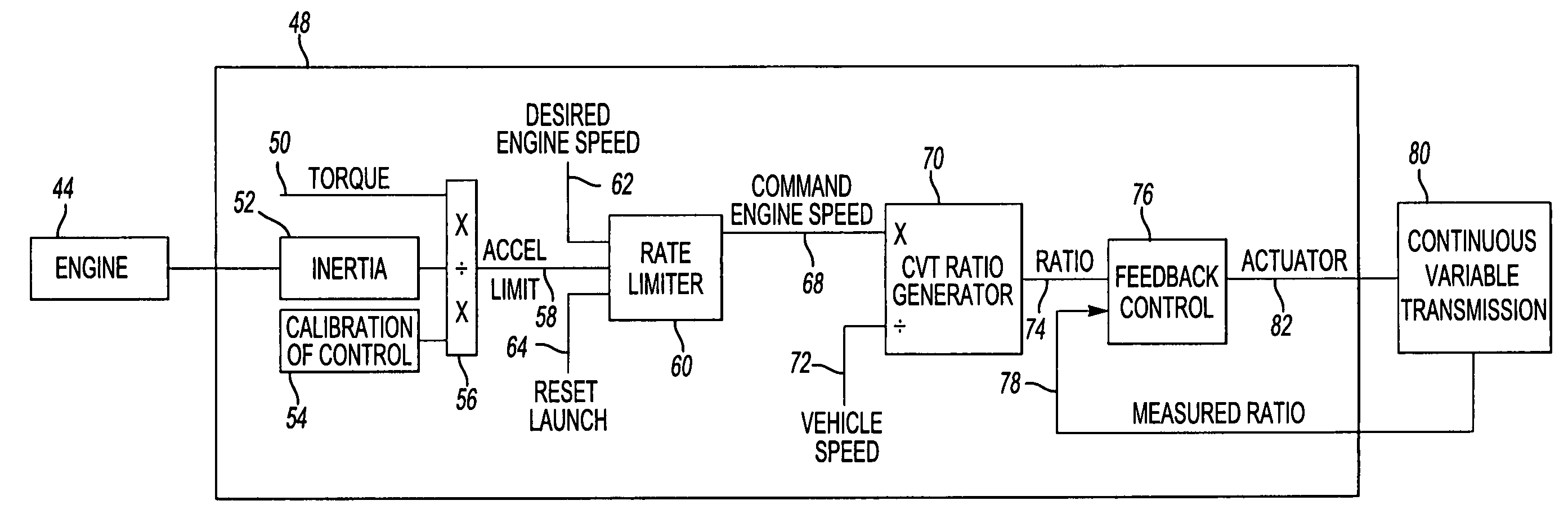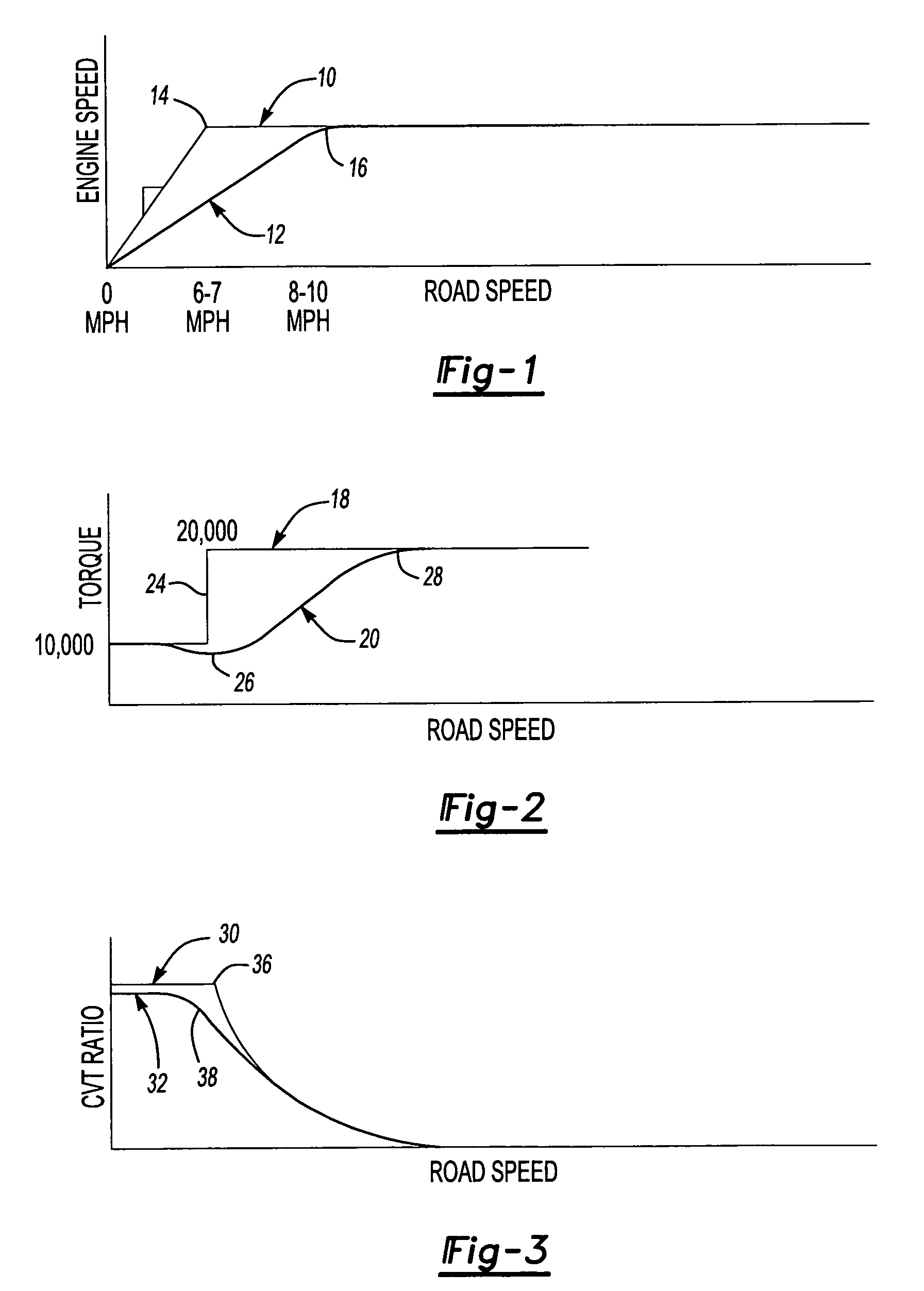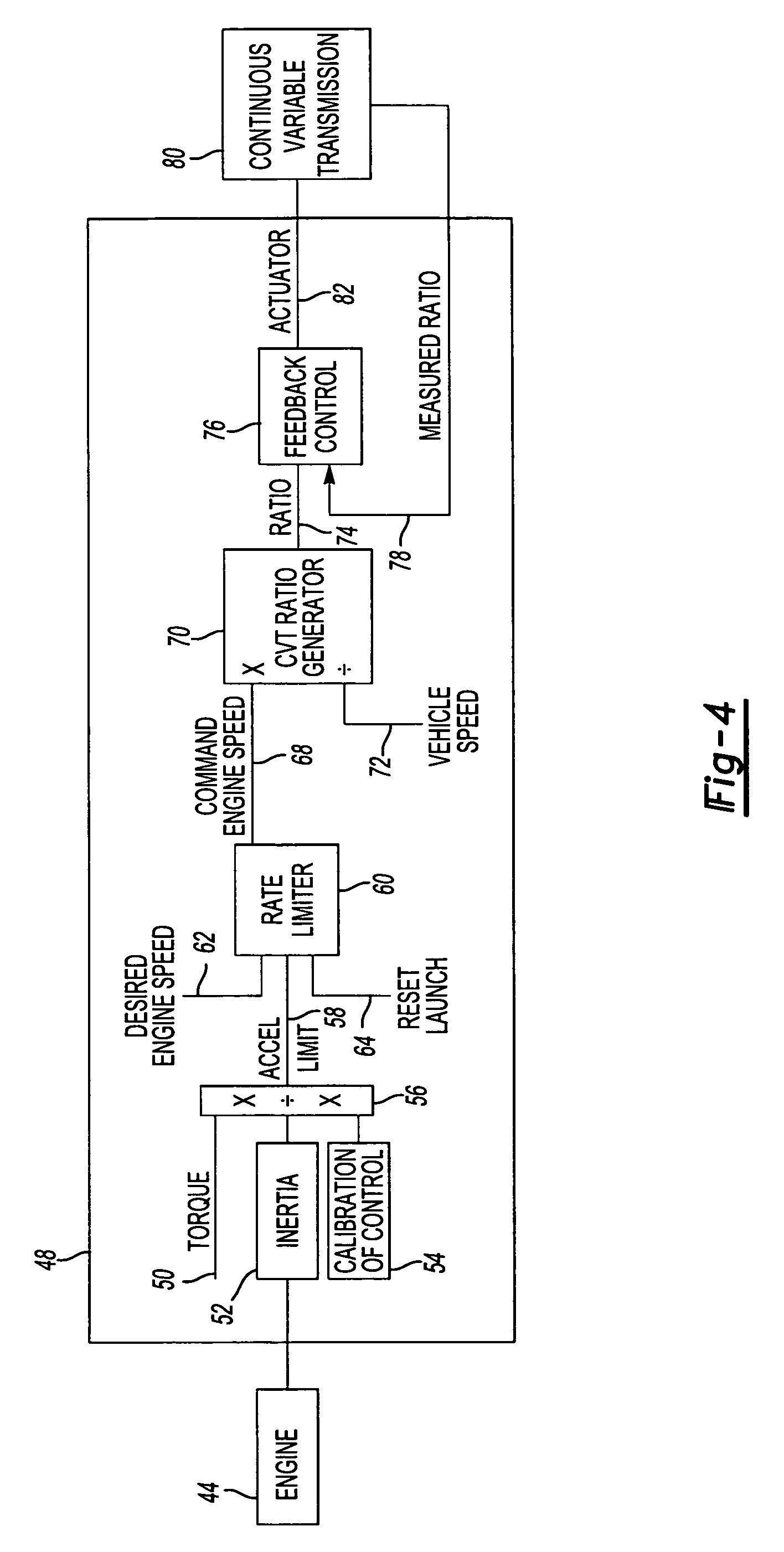Method and apparatus for controlling a contiuously variable transmission
a technology of contiuously variable transmission and transmission shaft, which is applied in mechanical apparatus, digital data processing details, instruments, etc., can solve the problems of undesirable lurching motion, vehicle lurching to such an extent, and inability smooth operation, so as to achieve a smooth operation
- Summary
- Abstract
- Description
- Claims
- Application Information
AI Technical Summary
Benefits of technology
Problems solved by technology
Method used
Image
Examples
Embodiment Construction
)
[0022]Referring to FIG. 1, a graph is provided that compares a normal acceleration from launch curve 10 to a rate limited acceleration from launch curve 12. A normal transition point 14 represents the transition in engine speed as it accelerates from launch to the running rpm, or constant rpm, level. For example, as an engine accelerates from launch or zero engine speed to 1,400 rpm, the engine accelerates at a relatively rapid rate to overcome engine inertia. At the normal transition point 14, the vehicle may undesirably lurch forward due to a step change in torque that will be described with reference to FIG. 2. The rate limited acceleration from launch curve 12 has a rate limited transition period 16 that provides a more gradual transition from engine acceleration to the constant engine speed. Engine acceleration is lower during the launch curve 12 resulting in the engine providing less torque change in transition. Acceleration is more gradual with the rate limited acceleration ...
PUM
 Login to View More
Login to View More Abstract
Description
Claims
Application Information
 Login to View More
Login to View More - R&D
- Intellectual Property
- Life Sciences
- Materials
- Tech Scout
- Unparalleled Data Quality
- Higher Quality Content
- 60% Fewer Hallucinations
Browse by: Latest US Patents, China's latest patents, Technical Efficacy Thesaurus, Application Domain, Technology Topic, Popular Technical Reports.
© 2025 PatSnap. All rights reserved.Legal|Privacy policy|Modern Slavery Act Transparency Statement|Sitemap|About US| Contact US: help@patsnap.com



